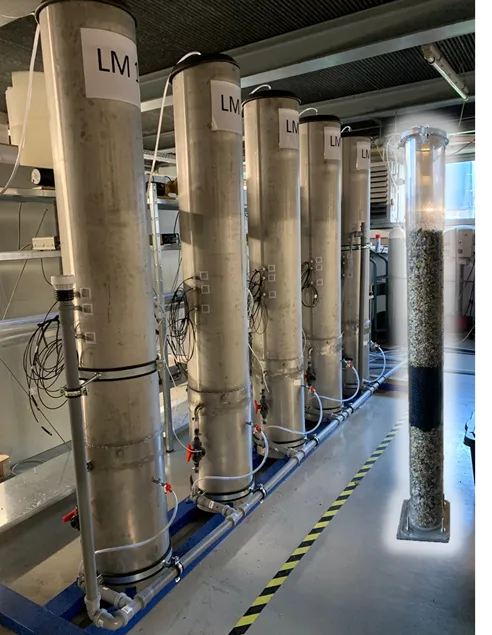Elimination of trace organic chemicals at small-scale wastewater treatment plants using the Irschenberg as a case study
Despite high standards of wastewater treatment, numerous anthropogenic trace organic chemicals (TOrCs) enter the aquatic environment via municipal wastewater in Germany. In particular, substances that are difficult to biodegrade and mobile pass through conventional wastewater treatment plants almost unchanged. There, these substances can lead to adverse effects, e.g. on aquatic organisms and drinking water production from bank filtrate. At present, the use of an additional treatment stage for trace substances is being tested and implemented primarily at medium to large wastewater treatment plants to achieve the greatest possible reduction in inputs to the environment. Adsorption on activated carbon (PAC or GAC) and ozonation as well as a combination of both processes have become widely accepted. For smaller wastewater treatment plants in the range of 2,000-10,000 p.e., the elimination of trace substances has hardly been discussed so far. The amendment to the EU's Urban Wastewater Discharge Directive also does not provide for the removal of trace substances at small-scale wastewater treatment plants (2,000-10,000 p.e.). However, removal of trace substances may also be necessary here to protect very small and sensitive receiving waters.
The Irschenberg wastewater treatment plant (7,000 p.e.) was selected as a case study for this project. As part of a grant (Wastewater Innovation Award 2020), a new construction is planned for the wastewater treatment plant. In the course of the renewal and expansion of the Irschenberg WWTP, a vertical filter (VFCW) is planned in the secondary treatment. The filter will be used for the elimination of TOrCs and partial hygienization. The filter body will be equipped with layers of fine gravel and granulated activated carbon (GAK).
Test pits will be integrated into the filter to test further variants during operation, such as a mixture of fine gravel/sand and activated carbon vs. individual layers. Furthermore, different filter grain sizes can be investigated and the differentiation between sorption and biological degradation can be considered.
For the simulation of the vertical filter at the Irschenberg wastewater treatment plant, column experiments are carried out at the technical center of the chair. Based on these experiments, recommendations for the filling and operation of the vertical filter in Irschenberg can be derived. Variables to be tested are, for example, the feeding regime (surge vs. continuous), the saturation state (saturated vs. unsaturated), the hydraulic residence times, and the service life of the activated carbon.
The project aims are to develop and test cost-effective and low-maintenance solutions for the removal of trace substances at smaller wastewater treatment plants.
The first phase of the research project runs from October 2022 to September 2026.
Project leader |
|
| Researcher | Anna-Sonia Kau, M.Sc. |
| Funding | LfU Bayerisches Landesamt für Umwelt |
| Cooperation partner | Ingenieurbüro Dr.-Ing. Dieter Schreff |
